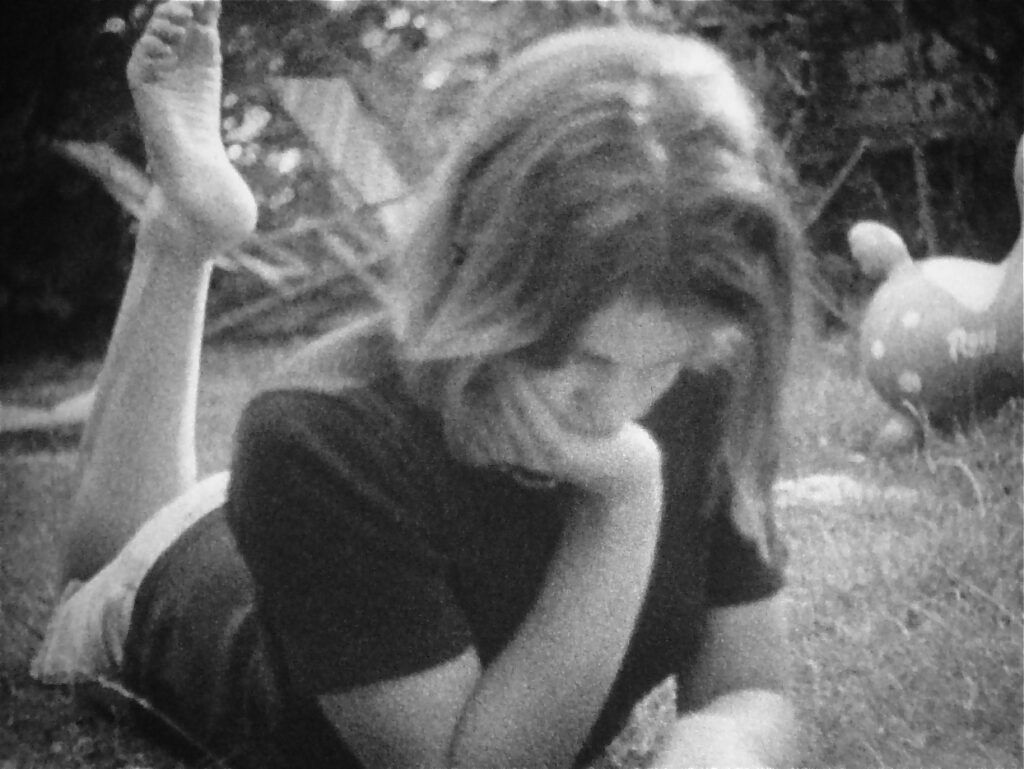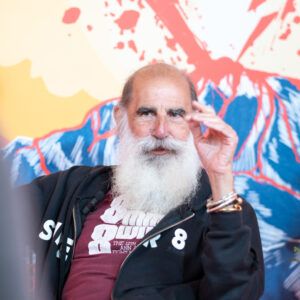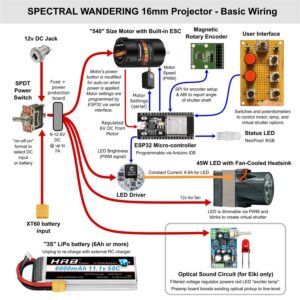- To mark the programme we are dedicating to Ute Aurand, “The tonality of days”, we are recovering this conversation between the filmmakers about her film Terzen (Programme 1), which is a compilation of what Aurand filmed throughout almost the entire decade of the 90s: a film of films, which ends with an alternative version of Zu Hause.

Robert Beavers: The day after watching your film Terzen I could still feel the rhythm of the film. But seeing beyond the fast pace, the dynamic lightness and the everyday content, I realized how the joyfulness of your work often derives from a certain serenity and the courage to face mortality. That for me is the surprising meaning and the hidden melody of your work. Improvisation is very important to you. Do you think it aids you in reaching this ‘other level’?
Ute Aurand: Yes, improvisation helps me to get to this place – when something can only be filmed in that one particular moment, and when it then transcends that singularity. When that is achieved, then it is good.
Robert Beavers: The rhythm of your camera movements creates a vibrancy, scene after scene, no matter whether you film an object, a landscape or people. You use the handheld camera to capture the moment, and your own feelings are expressed in the rhythm.
Ute Aurand: To me it is always important how a film affects you after you have seen it as a totality and not in its components. That’s why Terzen, with its rapid pace and its many individual images, dissolves for me in hindsight, in my memory, into a single distinct state of being.
Robert Beavers: Let’s talk in more detail about some of your stylistic devices. There’s often a white or overexposed frame at the beginning or end of a shot. Normally those flash frames are taken out, but you leave them in. Are you doing this to create an additional rhythm?
Ute Aurand: These frames appear without an effort on my part, it’s the way the Bolex camera is built. They emphasize the film’s rhythm. I’m not concerned with them while I’m filming – only later when I’m editing do I decide whether to cut them out or keep them. Usually I keep them in.
Robert Beavers: Do you embrace the flash frames because you generally work with variations of exposure, like overexposure and out-of-focus shots?
Ute Aurand: That’s right, I use the fade-in and fade-out. I create these in camera while filming, the same with the out-of-focus shots. Both of these devices transform the way you see, things appear in a new light. Out-of focus shots are sometimes great because of their vagueness.
Robert Beavers: Often you use the fade-in and open the aperture to white. That seems quite unusual. Many filmmakers, including myself, prefer the fade-out.
Ute Aurand: That’s a personal preference. I favor the idea of an image disappearing or dissolving into whiteness. It’s as if the light washes the image away – usually a faint trace of the picture remains. I prefer this to fading to black, which is more like a tightening, a compacting of matter, you get strong, saturated, deep sounds. Whiteness for me is a bridge: elevated and bright sounds. It creates a different melody.
Robert Beavers: What about the relationship between sound and image? The rhythm of your shots is very elaborate and dynamic – while the sound is often much more constant and operates in longer sequences. Sometimes the sound continues from one section into another in your films. In Terzen there is, for example, the scene with the boy playing the violin. The sounds of the violin and the expressions of his mouth form a physical entity – but then the sound continues on into the next scene with the ducks.
Ute Aurand: That’s right, the original sound of one scene, when Anton plays the violin, suddenly becomes a nondiegetic score for the following scene. The ducks and the rhythm of the violin went very well together, that’s why I extended the sound track. In many parts the film is silent, in which case the rhythm of the shots has a musical function. But sometimes I want to add a certain mood, deliberately and audibly.
Robert Beavers: In the scene in the snow, when the children are sledging in the distance, I feel the emphasis lies more with the sound than with the image…
Ute Aurand: I’m not sure what makes this short scene so strong, perhaps the subject matter? Sledging is childhood. And the medieval music emphasizes this warm, reminiscent feeling. And the undulating snowcovered landscape is like an old painting. To me this is a real collaboration between image and sound, the sound is not dominant over the image.
Robert Beavers: You filmed many children in your work …
Ute Aurand: Children are timeless, in a way …
Robert Beavers: Are they?
Ute Aurand: Oh yes they are. Children have a timeless quality, or maybe the quality of real presence. Children perceive the world with different eyes, that’s why I like their company. I like to be with them. They take me to a different place. In Hinduism, every goddess and every god has an animal that carries them. For me it’s children, they put me in a different frame of mind, they transport me to a different world, and it’s very very easy.
Robert Beavers: What are your thoughts on your own presence in the film?
Ute Aurand: Here and there I’m visible in my films, usually indirectly: Me reaching out for the blossom, my shadow walking across the grass or casting a shadow on the wall. It is a more explicit reference to the person behind the camera than framing and rhythm, but finally it is one and the same.
Robert Beavers: You often talk about “poetic film”. I’ve decided not to use the word “poetic” for film. The word “poetry” is misleading, it is a literary term. But I am intrigued that you make the connection between poetry and the self of the filmmaker, as you describe in your text “Lichtgedichte” (light poems).
Ute Aurand: When I read haikus for the first time I was impressed by their visual intensity, by the condensed image, by how the said and the unsaid are connected, and how important the gap between the two is. It is like jumping from stone to stone: the water in between is very important, but so are the stones. In my way of making films the images are the stones and that which you cannot see, the invisible, is in the gaps between. When the personal expresses itself from within that invisibility, then that’s what I mean by poetic. I don’t want to be limited by a certain conception of film or an idea, or by the passion of conquering something new. That’s not what I’m interested in.
This text is edited and translated from a conversation between the filmmakers in Berlin, 4 September 2004. Edited and adapted February 2014. Translated from German by Laurin Federlein.





